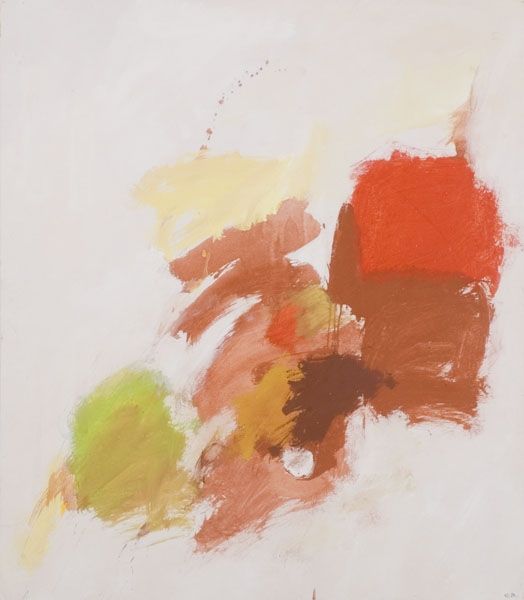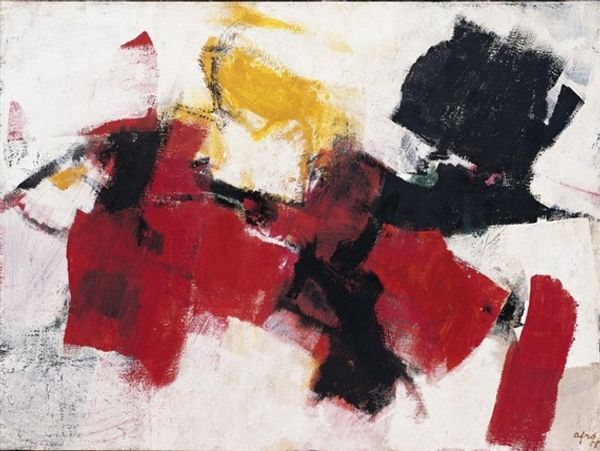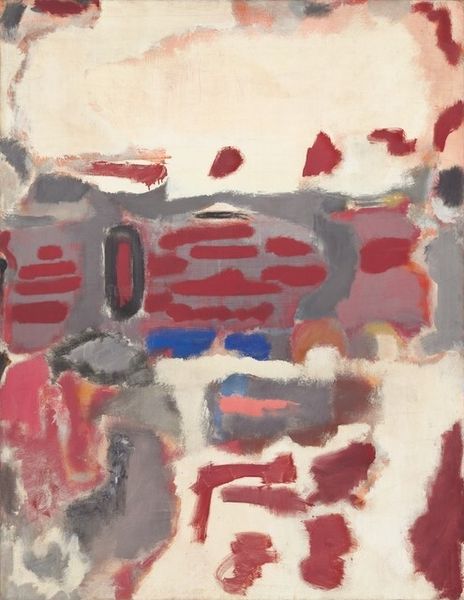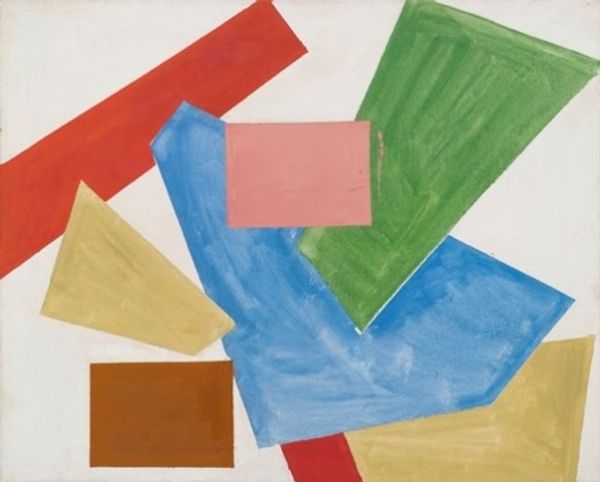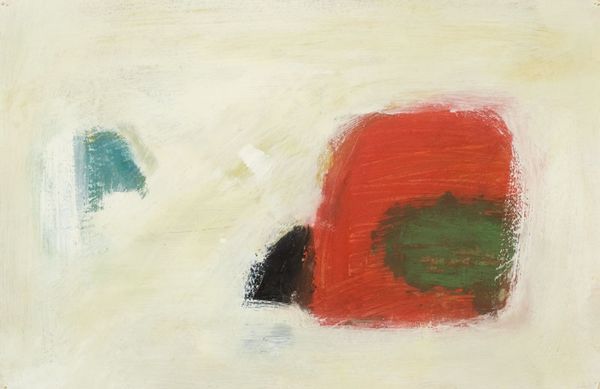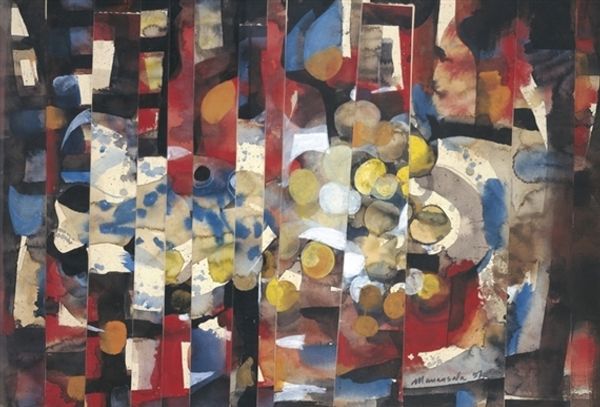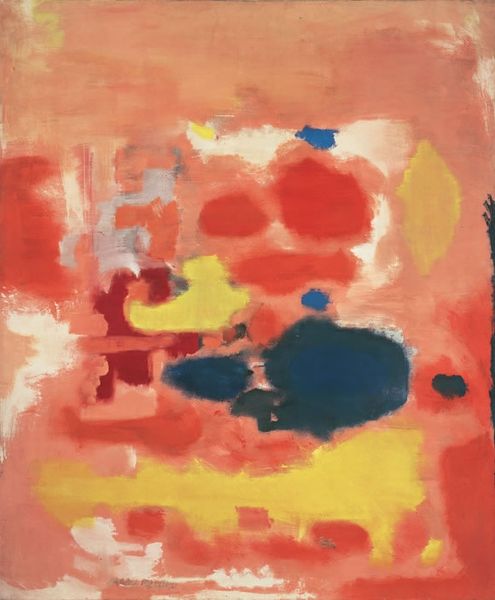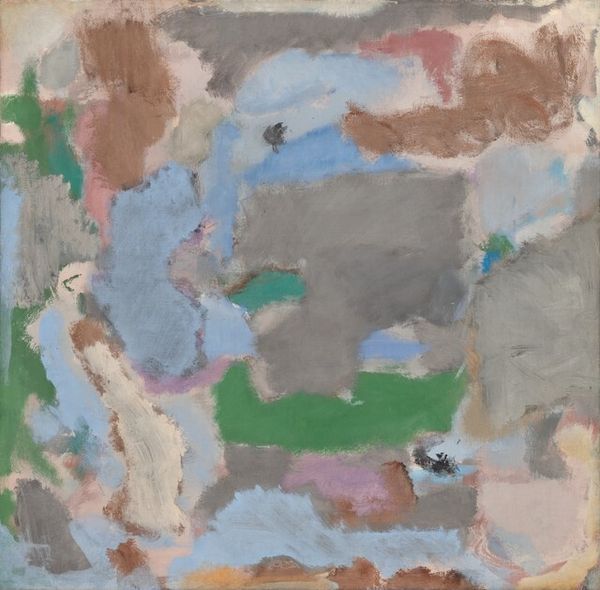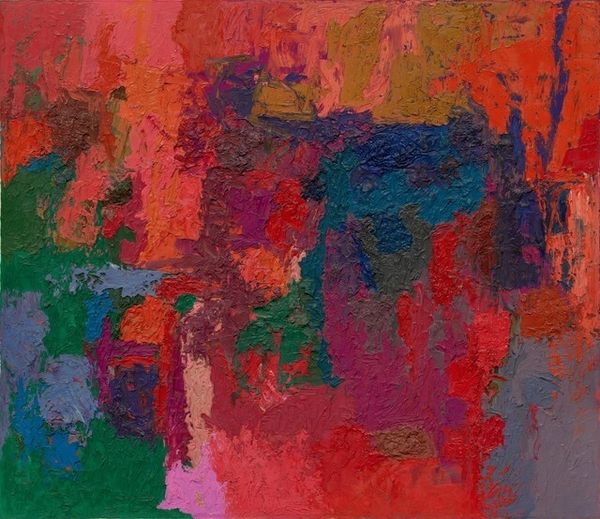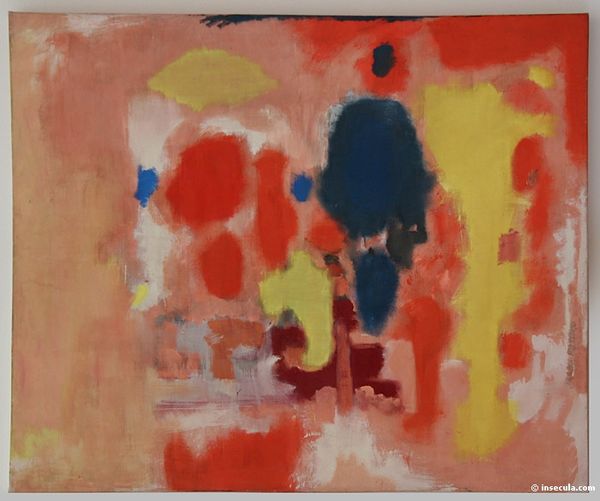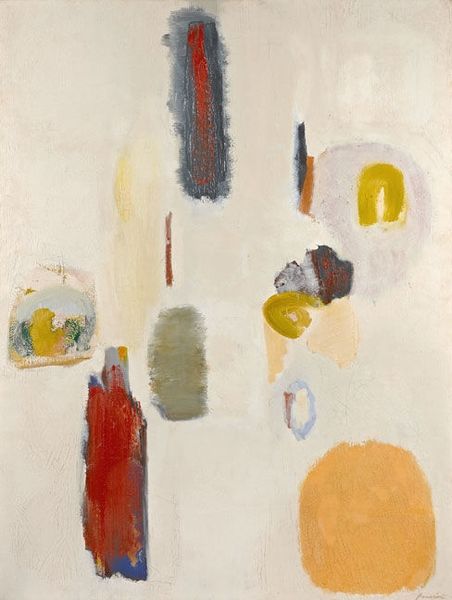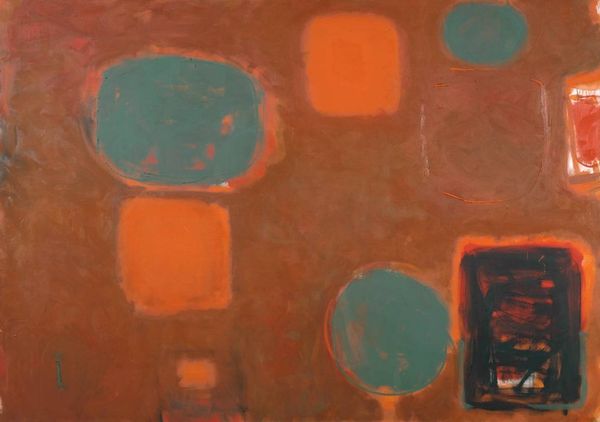
painting, gouache
#
gouache
#
abstract-expressionism
#
painting
#
gouache
#
geometric-abstraction
#
abstraction
Copyright: Kenzo Okada,Fair Use
Curator: Kenzo Okada’s "Tanabata," created in 1955 using gouache, is a wonderful example of geometric abstraction. It is characterized by a series of blocks in an off-set arrangement. Editor: My immediate reaction is one of muted celebration, perhaps a controlled joy. The forms suggest flags, but in subtle and subdued tones. It seems intentionally informal and transient, perhaps celebratory, yes. Curator: The gouache allows for these translucent washes of color that give a real sense of depth. You see, gouache sits between watercolour and acrylics—with similar properties to watercolour but more opaque. This piece also stands at a pivotal moment in Okada’s development; one can really notice an evolution from representation towards pure abstraction here. Editor: I wonder if the title "Tanabata," a Japanese star festival celebrating the meeting of deities Orihime and Hikoboshi, relates directly to these forms. Notice how the individual shapes hover almost independent of one another. Each star in its own zone. Could each angular figure evoke specific aspects of that celestial love story? Curator: Or perhaps Okada was referencing the festival’s traditional arts and crafts? Thinking about the laborious craft involved in making origami, or Tanabata decorations with colored paper. There is the potential to connect that level of handmade production into something perceived as 'high' art. Editor: That's interesting, a grounded element alongside these transcendent ideas! It pulls down to earth this heavenly tale. The color scheme certainly carries an emotional impact too. Notice how the light gray backdrop contrasts with the more vibrant shapes of red, pink, green, yellow and blue. It creates a push and pull that can make your eye linger over areas as you assemble your reading. Curator: And don’t forget that by 1955 Okada had already travelled to New York! Think about how he integrated Abstract Expressionist philosophies on materiality in post-war America and applied them to this Japanese subject. That act alone questions divisions between East and West in artistic movements. Editor: Absolutely. It is truly fascinating to observe how art can bridge cultural narratives using color and shape, and hint towards deeper tales that ripple through civilizations. Curator: Indeed. And by examining the physical making of this work, and the time and material incorporated, we find a link between craft practices and supposedly more sophisticated painting.
Comments
No comments
Be the first to comment and join the conversation on the ultimate creative platform.
